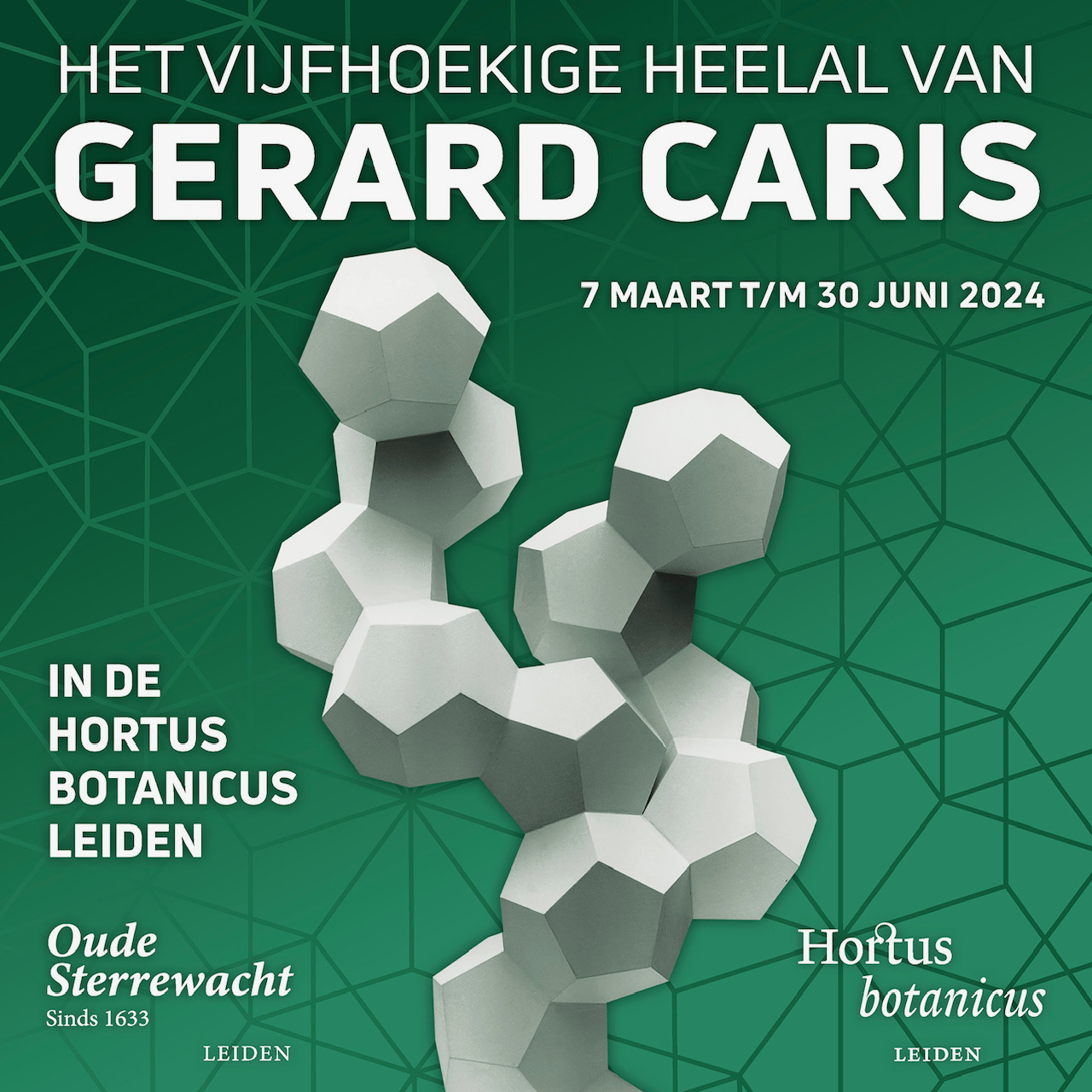The pentagonal universe of Gerard Caris
As a general guiding principle with which I conceive and execute my creative endeavours, there is the notion of an interconnectedness within an overall cosmic construction. The flowers in the field exhibit the same geometrical symmetry as the crystals hidden in the earth; all existence seems to be governed overall by a larger scheme.
This is highly valuable to me as an intuitive force shaping my oeuvre. (…) At its centre is the pentagon and its related geometry with all its permutations, which have been pursued and paraphrased through a new visual language which I have coined Pentagonism.
Gerard Caris
Gerard Caris and Pentagonism
Gerard Caris (Maastricht 1925) is an artist-researcher who occupies an exceptional position within modern art. Trained as an artisan, he took up jobs all around the world, in the army, in the oil business, and in the early satellite communication industry. In the US, he studied art and philosophy, and is mentored by the famous artist David Hockney. Near the end of the sixties, Caris returns to the Netherlands, now fully devoted to the fine arts. He plots a unique course of artistic discovery, resulting in almost 60 years of intuitive studies into the mathematical properties of the pentagon. To describe his life's work, he coins the term Pentagonism.
The work of the almost 100-year-old artist is often connected to the early geometric-abstract artists like Piet Mondriaan and fellow members of De Stijl. There is also a clear fit with the minimalist movement of the 1960s and 70s. Moreover, there is a clear kinship with the graphic artist M.C. Escher (1898-1972). Yet, it is impossible to categorize Caris under any particular style or movement in art history. His Pentagonism constitutes a universe by itself. The works of Gerard Caris have formed the centerpoint of many prominent international exhibitions, including two solo exhibitions at the Stedelijk Museum in Amsterdam.
Gerard Caris is driven by a fundamental curiosity. He wants to discover the non-existent, and visualize his findings in his art. In this way, he elucidates the unknowable structures of our world, from the smallest natural scales to the largest structures of galaxy clusters. Caris clearly demonstrates that art and science connect in natural ways, and they reinforce each other. The power of repetition and the purity and abstraction of his imagery renders a great beauty to his artworks. The reliefs and sculptures come to life in their lighting, and they constantly change based on the observer's perspective. The esthetics of the pentagonal universe of Gerard Caris are as emotional as they are mathematical. We invite you to bring out your intrinsically human curiosity and creativity, and explore the extraordinary works in this exhibition.

